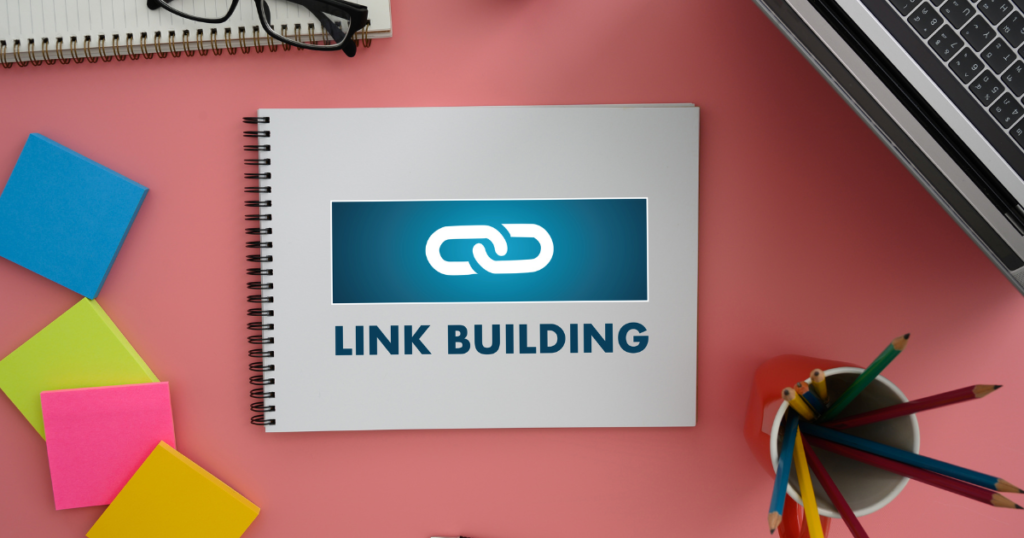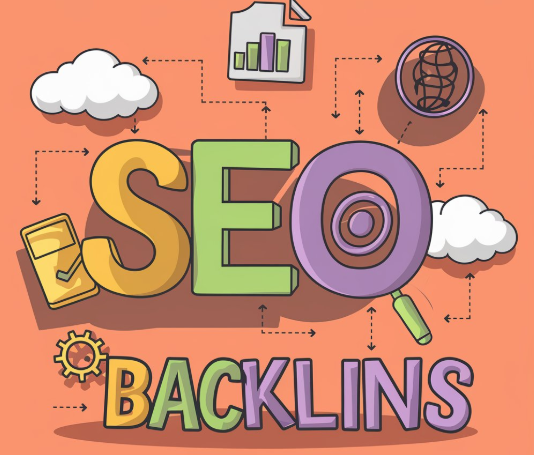In today’s digital world, businesses need strong online visibility to succeed. This is where SEO (Search Engine Optimization) plays a crucial role in digital marketing. SEO helps websites rank higher on search engines like Google, bringing in more visitors and potential customers.
One of the key factors in SEO success is URL indexing—ensuring that search engines can find and store your web pages. Another vital strategy is link building, which helps improve a website’s authority and ranking by getting quality backlinks from other trusted sites.
The problem is that many businesses struggle with SEO because they do not understand how indexing and link building work. Without these, even the best content may not rank well. This guide explains their importance and how they can boost your website’s performance.
What is URL Indexing?
URL indexing is the process by which search engines like Google store and organize web pages in their database. When a page is indexed, it becomes eligible to appear in search results. If a page is not indexed, users won’t find it through search engines.
Why Rapid URL Indexing is Essential for SEO?
If your website pages are not indexed quickly, they won’t appear in search results, meaning no organic traffic. While you wait, your competitors might already be ranking, getting visitors, and making sales. Fast indexing ensures Google recognizes your content early, giving you a better chance to compete.
When a new page goes live, search engines take time to discover it. The faster your page is indexed, the sooner it can rank. Slow indexing means missed opportunities, as users might find your competitors instead. By using smart techniques like Google Search Console requests, XML sitemaps, and internal linking, you help search engines find your content faster.
In a competitive market, every second counts. Rapid indexing keeps you ahead, ensuring your content reaches the right audience before your rivals take the lead.
Techniques for Rapid URL Indexing
Getting your web pages indexed quickly is essential for SEO success. If a page is not indexed, it won’t appear in search results, which means no organic traffic. Instead of waiting for search engines to find your content naturally, you can take specific steps to speed up the process. These methods ensure that search engines discover, crawl, and store your pages in their database as quickly as possible.
Google Search Console: Request Indexing
Google Search Console (GSC) is one of the most effective tools for ensuring quick indexing. After publishing a new page, go to the “URL Inspection” tool in GSC and enter the page URL. If the page isn’t indexed yet, there will be an option to “Request Indexing.” This sends a signal to Google’s crawlers to prioritize scanning your page. It’s a great way to speed up the indexing process rather than waiting for Google to find it naturally. If your website has regular content updates, checking the index status in GSC frequently ensures all your important pages are properly stored in Google’s database.
Using IndexNow API for Instant Indexing
IndexNow is a relatively new feature that allows search engines like Bing and Yandex to discover new or updated content instantly. Instead of waiting for bots to crawl your site periodically, IndexNow immediately notifies search engines about changes. To use it, you need to integrate the IndexNow API into your website or use a plugin if your site runs on WordPress. Once set up, every time you publish or update a page, IndexNow sends an automatic notification to participating search engines. This ensures that new content gets noticed and indexed much faster than traditional crawling methods. If you frequently update content or add new pages, this tool can be a game-changer.
XML Sitemaps: Optimize & Submit
An XML sitemap is like a directory that helps search engines find all the important pages on your site. It lists URLs in a structured format, making it easier for crawlers to scan your site efficiently. To speed up indexing, ensure that your XML sitemap is up-to-date and includes only important pages. You can create a sitemap using tools like Screaming Frog or online sitemap generators. Once created, submit it to Google Search Console and Bing Webmaster Tools. Many modern website platforms automatically update sitemaps when new content is added, but it’s always good to verify this manually. A well-structured sitemap helps search engines prioritize indexing your site.
Internal Linking for Faster Crawling
Search engines discover new pages by following links. If a page on your site doesn’t have any internal links pointing to it, it may take longer to get indexed. This is why internal linking is so important. Whenever you publish new content, link to it from existing high-authority pages within your website. This not only helps search engines find the page faster but also improves the user experience by guiding visitors to related content. Another effective approach is to update old blog posts with links to your latest content. This refreshes those pages and signals to search engines that they should be re-crawled. Proper internal linking creates a smooth pathway for search bots, improving indexing speed.
Social Media Signals & Content Sharing
While social media links are not direct ranking factors, they can still help get your page indexed faster. When you share a new URL on platforms like Twitter, Facebook, LinkedIn, or Reddit, it increases the chances of search engines discovering it. This happens because search engine bots regularly crawl social media platforms for fresh content. Posting links in active online communities, industry groups, and discussion forums also helps. The more engagement a link gets—likes, shares, and comments—the higher the chances of search engines noticing it quickly. Encouraging others to share your content further expands its reach, which can speed up the indexing process naturally.
Ping Services & Web 2.0 Backlinks
Ping services notify search engines when new content is published, prompting them to visit and index the page sooner. Websites like Ping-o-Matic and Google Ping make this process simple—just enter your URL, and they send a request to various search engines. Another method to boost indexing speed is creating backlinks on Web 2.0 platforms like Medium, Tumblr, or Blogger. Publishing a short article or summary of your new content on these platforms, with a link pointing to your original page, helps search engines find it faster. Since these platforms are frequently crawled, links from them can drive indexing much quicker than waiting for search engines to discover your page naturally.
By implementing these strategies, you can significantly reduce the time it takes for search engines to find and index your web pages. Regularly monitoring indexing status and ensuring proper site structure further improve the process, keeping your website visible and optimized for search rankings.
Common Indexing Issues & How to Fix Them
Blocked by Robots.txt → Ensure your page is not restricted.
Noindex Tag → Remove if indexing is needed.
Slow Loading Speed → Optimize images and code.
Duplicate Content → Use canonical tags.
Lack of Internal Links → Link important pages properly.
Proven Link Building Strategies
Guest Posting on High DA Sites
Writing articles for high-authority websites in your niche helps you earn quality backlinks and reach a new audience. Choose sites with strong domain authority (DA) and relevant traffic to get the best results. Avoid spammy guest posting networks—focus on genuine, high-quality contributions.
Broken Link Building: A Hidden Opportunity
Find broken links on popular websites and suggest your content as a replacement. Use tools like Ahrefs or Check My Links to discover broken links. Website owners appreciate the help, and you get a valuable backlink in return. This strategy works well because it benefits both parties.
HARO (Help a Reporter Out) for Authority Backlinks
Journalists need expert opinions, and HARO connects them with sources. Sign up, respond to relevant queries, and get featured in major publications with high-authority backlinks. This method builds credibility and boosts SEO rankings while positioning you as an industry expert.
Skyscraper Technique: Outranking the Competition
Find top-ranking content in your niche, create a better, more detailed version, and reach out to websites linking to the original post. Offer your improved content as a superior alternative. This method increases your chances of earning quality backlinks.
Niche Edits & Contextual Backlinks
Instead of creating new content, niche edits involve adding your link to an existing relevant article. Contextual backlinks are natural links within content, making them more valuable than random mentions. Build relationships with site owners to secure high-quality niche edits.
Advanced Link Building Tactics
As competition in SEO grows, advanced link-building strategies can give you an edge. However, some methods come with risks, so it’s important to use them wisely. These tactics can boost your rankings, but they should be part of a well-balanced SEO strategy.
PBNs (Private Blog Networks): Risk & Rewards
PBNs are networks of websites created to link back to a main site, boosting its authority. While they can work in the short term, Google actively penalizes sites using PBNs if detected. The reward is faster ranking improvement, but the risk is high—your site could lose its rankings overnight. If you choose this route, ensure your PBNs look natural and are not easily traceable.
Expired Domains for SEO Advantage
Buying expired domains with strong backlinks can give your SEO a head start. If an old website had high-quality links and good authority, you can repurpose it for your niche. However, check its history to ensure it wasn’t spammy or penalized. Some marketers redirect expired domains to their main site, passing on link juice and boosting rankings.
Tiered Link Building: Strengthening Your Backlinks
This strategy involves building links to your backlinks, making them stronger. For example, if you get a guest post backlink, you can create Web 2.0 links, social bookmarks, or forum posts linking to that guest post. This helps pass more authority to your website while keeping your link-building process more natural. Tiered linking adds a layer of protection against penalties.
SEO Tools for Fast Indexing & Link Building
SEO success depends on the right tools. Whether you’re trying to get your pages indexed quickly or building strong backlinks, using the best tools can save time and effort. Here are some essential free and paid tools that can help grow your website’s visibility.
Best Free & Paid Tools for SEO Growth
For fast indexing, Google Search Console is the best free tool. It helps submit sitemaps, request indexing, and monitor your pages. If you want instant indexing, IndexNow is useful, especially for Bing and Yandex.
For link building, Ahrefs and SEMrush are powerful paid tools. They help find backlink opportunities, analyze competitors, and track your rankings. If you’re on a budget, free tools like Ubersuggest and SEO Minion can help with keyword research and basic link analysis. Check My Links is great for finding broken links, which can be replaced with your own.
Automating Your SEO Without AI & Bots
Automation makes SEO easier, but it’s important to avoid spammy AI-based link-building tools. Instead of bots, use smart strategies like scheduling social media posts with Buffer or Hootsuite to get your content noticed faster. For outreach, Hunter.io helps find email contacts of website owners so you can manually build high-quality backlinks.
SEO plugins like Rank Math or Yoast SEO for WordPress help optimize content for search engines while keeping indexing smooth. To track backlinks naturally, Google Alerts can notify you when someone mentions your brand, allowing you to request a proper link.
Benefits of Combining a Rapid URL Indexer with SEO
Combining a rapid URL indexer with your SEO efforts is like turbocharging your website’s visibility. When you use a URL indexer, your new pages and updates are noticed by search engines almost instantly. This means your content can start ranking sooner, attracting organic traffic while it’s still fresh and relevant.
By speeding up indexing, you stay a step ahead of competitors who rely on standard, slower indexing methods. Your site gains an edge, especially in fast-paced industries where being first matters. Plus, rapid indexing helps you quickly measure the impact of your SEO changes, letting you fine-tune your strategies in real-time.
In the world of SEO, agility is key. A rapid URL indexer ensures your hard work doesn’t sit unnoticed—it’s seen, ranked, and driving traffic your way while others are still waiting to be discovered.
Case Studies & Success Stories
SEO success doesn’t happen by luck—it’s the result of smart strategies, rapid indexing, and strong link-building. Here are real-life examples of businesses that used SEO effectively to beat competitors and dominate search rankings.
1. A Local Bakery Ranked #1 in 30 Days
A small bakery struggled to appear in local search results. They optimized their Google Business Profile, fixed indexing issues, and built backlinks from local food blogs. Within a month, they ranked #1 for “best bakery in [city]” and saw a 60% increase in foot traffic.
2. E-commerce Store Boosted Sales with Rapid Indexing
An online clothing store launched new products, but they weren’t appearing on Google. By using Google Search Console’s “Request Indexing,” submitting XML sitemaps, and sharing products on social media, their pages got indexed within hours. Within weeks, organic sales increased by 45%.
3. A Tech Blog Surpassed Competitors with the Skyscraper Technique
A tech blogger wanted to rank for competitive keywords but was stuck on page 3. They found high-ranking articles, created a more in-depth version, and reached out to sites linking to the old content. With quality backlinks and better content, they jumped to page 1 in just two months.
These businesses didn’t rely on luck—they used rapid indexing and smart SEO tactics to outrank competitors. The key to success is consistency, strategy, and staying ahead of industry trends.
Conclusion
SEO is a continuous process that requires the right strategies and patience. By focusing on indexing, link building, and high-quality content, you can improve your website’s visibility and rankings. Ensuring your pages are properly indexed and earning valuable backlinks will help you stay ahead of competitors.
To get an instant SEO boost, regularly update your sitemap, request indexing in Google Search Console, and use internal links to guide crawlers. Build high-quality backlinks through guest posts, broken link building, and outreach. Share your content on social media and niche platforms to increase exposure.
The future of SEO will be shaped by AI-driven search, voice search, and user experience. Google will continue prioritizing valuable, well-structured content. Staying updated with SEO trends and adapting to changes will keep your website competitive in the long run.



